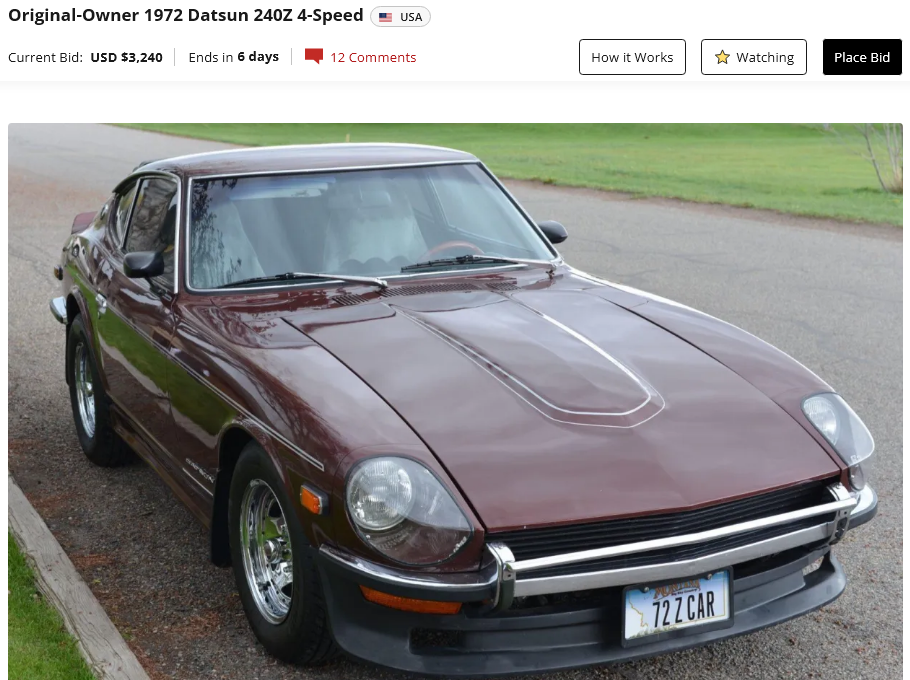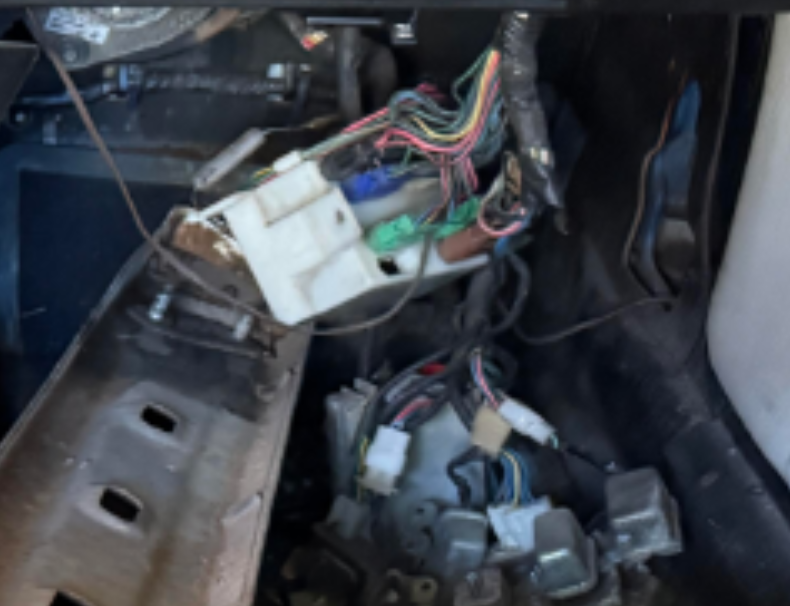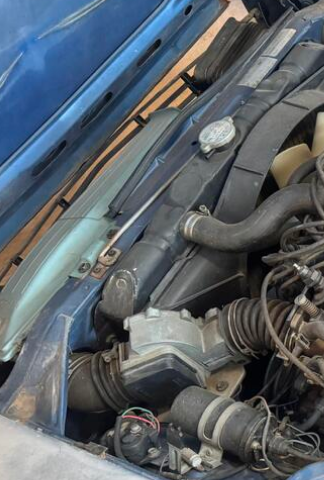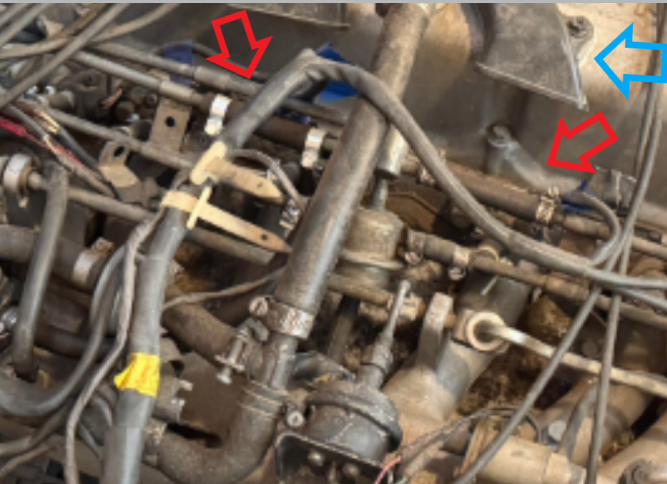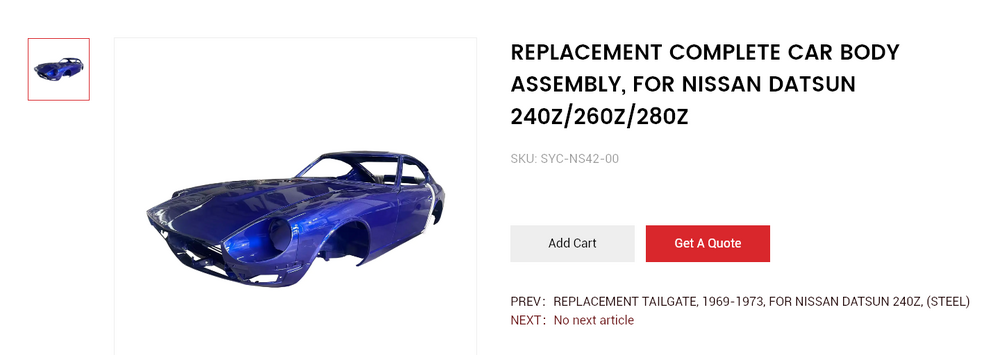Everything posted by Zed Head
-
Z's on BAT and other places collection
Apparently the seller wants ~$78,000. Had not heard of "Super Samuri" before. I assume the non-traditional spelling is intentional. Seems odd. Seems similar to the Scarab program in the States. Tip - if you highight the words in the sky they will change to text that is readable. https://www.samuri.uk/ https://www.samurimotorcompany.com/history-of-samuri-motor-company
-
240 with e12-80 plug gap
Those knee replacements seem to be hit or miss. I've seen people with the good ones but also seen those with not-so-good. Hard to tell how to make sure you get a good one. If you're planning to get one do the research and try to increase your odds. Actually, that applies to any surgery in today's modern medical-industrial complex. Once you get on the conveyor belt it's hard to get off in good shape. Healing can take a while though. Those short-time "back to normal" piece-of-cake no-problems stories are rare.
-
Z's on BAT and other places collection
Super Will Know! Amazing how these "professionals" can put something out on the WORLD WIDE WEB with such a simple spelling error. Bizzare. Uploading Attachment...
-
Z's on BAT and other places collection
Pretty nice 72 with a ~100,000 mile rebuild engine. https://bringatrailer.com/listing/1972-datsun-240z-377/
-
240 with e12-80 plug gap
What's the tach needle doing when it's missing? Those E12-80's are all old, or if they're not they're probably aftermarket. Maybe it's failing.
-
1975 280z Build
You have quite a bit of work ahead of you still. Before you put a battery in it and connect it up take a meter and check for resistance between the negative and positive posts. If you have a short there will be very little resistance. Get the wiring sorted out before even installing a battery. Also, just a seed for future thought, be very careful that you know which cable is positive and which is negative. Nissan used black for both. Not uncommon to fry electronics on these old EFI Z's with a backward hookup. Looking at this mess it looks like the PO was trying to solve a problem or was getting ready to part things out. .
-
1975 280z Build
Probably want to check all of the air intake ductwork up to the throttle blade for mouse habitation before using the starter to spin the engine. The air filter box opens with the wing nuts. The AFM hoses need to have the clamps loosened. The hoses can be pretty stuck, you might want a thin screwdrive or a pick to work between the rubber and metal to break them free. Probably need to remove the AFM if you want to get the hoses off completely. The wire clip on the connector can be difficult. Also, check those fuel hoses. Looks like a PO has already fixed one. And the hoses to the injectors. Once you crank up the fuel pressure you'll know more. Might as well get a gauge also to check pressure and pressure dropoff. It will tell you if the regulator is blown out or the injectors are leaking or the check valve in the pump is shot. All common issues after sitting. That pump is probably shot just based on its appearance. The engine looks about ready to go. You'll want to check power to the coil and verify that the original 1975 electronic ignition module is intact, by the fuse box. They fail often. Open up the distributor and see if the bushings are shot. See if the vacuum advance and mechanical advance mechanisms are free. If they're not, don't force them, they can be saved with careful lubrication and disassembly but if you force a rusty mechanism the plastic ball brearing frame will break. I'd check the distributor before starting the engine, even the normal forces can probably break a stuck distributor. Ignore the blue arrow. I was going to mention the ZX fan but already did.
-
Help needed on starting problem
I'd take a test light or meter and see if the wire to the small spade connection on the solenoid is getting power when you turn the key to Start. You might have a cylinder full of coolant. Who knows. If you're getting power to the solenoid but it doesn't do its thing then you might have a bad starter/starter solenoid. Hit it with a hammer.
-
1975 280z Build
Those cylinders look great. What brand of camera/borescope? Four pages is a lot to review. Might help to summarize where you're at in the process. Cylinders look like they're ready for fuel, air, and spark.
-
Replacement Muffler Advice (78Z)
If you're going to have a muffler shop do it why not them look at it and use their database to find one. If you're going to do it yourself, then trying the no muffler twin stack should be easy. If the dimensions are correct. Looks like what you have is clamped on, not welded. So trying some things should be easy.
-
Z's on BAT and other places collection
The S30-World BaT auction has been delayed. S30.worldS30.world - The Masterpieces programThe Masterpieces program
- Opinion on Apex Engineered rear control arms and frame rails?
-
'77 280z running rich at idle, AFM screw doesn't work?
- 240z Complete Replacement Shell - The Ultimate Rust Repair Panel
toolman on Hybridz says that they'll be at SEMA Las Vegas in two weeks. Thought he had an account on CZCC but there are several toolmans listed here. They show what looks like a scrapped/stripped 240Z on a road in the desert. Facing the wrong way if it's meant to be in the States. On a road with odd yellow and white center striping. Combined with that Youtube short above with the cringey rap music, the whole enterprise seems strange. If anybody trys to buy a part from them don't forget about the tariffs. 57% now, could be 155% soon. If anybody is really interested it might be worthwhile to browse other car forums. They have an odd assortment of models shown. Here's one - https://www.carbody.com/product/classic-car/ford-parts/bronco-19661977-parts/ HybridZA COMPLETE EARLY MODEL 240Z BODY may be available soonA Chinese Metal Fabrication Company is planning to unveil a Brand New complete Early Model 240Z body at the 2025 SEMA SHOW in Las Vegas on Nov 4-7. They are looking for Distributors in North America.- 77" 280z sluggish after ~3000rpm
Weak chatbot? Where are the emojis?- 240z Complete Replacement Shell - The Ultimate Rust Repair Panel
How many/much replacement parts before it becomes not-a-Z? Is it weight or number or volume or area? https://en.wikipedia.org/wiki/Ship_of_Theseus And, how should the new thing be described? As a restored Z or a replica Z or just a Z, caveat emptor? Somebody needs to "Get A Quote". At least it's made of steel, apparently.- Blown fuse
That is true, but it could have been converted from auto. I'm just throwing out bread crumbs. Something is drawing too much current. Find the thing.- weatherstrip
Actually, Amazon added a W.- Blown fuse
Put a meter from the fuse exit to ground in continuity/resistance mode and see when the circuit goes open. Wiggle that nest of wires around. If the fuse is blowing it must be because that wire to the switch and lights is shorting to ground. Could be at the switch ( a bad switch) or after it. Or crawl under the car and test the pins on the switch to see if they're shorting to ground when you put it in reverse. Check the wiring diagram to see if any of the things after the switch are shorting to gorund. You didn't say auto or manual.- weatherstrip
I think it depends on the weatherstrip. I have a vague memory of metal clips in the Kia Sportage weatherstrip. No adhesive was needed. Really though, just put it on and if it's loose put some glue on it. Handling time 10 - 20 minutes, full cure 24 hours for the Windo-Weld (Amazon can't spell). Sometimes marketing converts a problem in to a supposed benefit. They don't actually say that "super fast" is a good thing. Work super fast and you shouldn't have any problems. Forgot to say, cure time probably depends on relative humidity. It's a moisture cure. I remember using a moisture cure construction adhesive on a hot dry day in summer and it took forever to set up. Full Cure Time 24 hr Handling Time 10 min - 20 min https://www.3m.com/3M/en_US/p/d/v000074326/- Blown fuse
p.s. 2 - check the reverse light sockets to see if they're melted and shorting to ground. I had one do that. Not reverse but a tail light socket. They get crusty and resistive and produce heat.- Blown fuse
Did the problem show up immediately after the new fuse box? More detail might help. The wiring diagram doesn't seem to show any connection between the reverse lamp circuit and the brake or gauge lights. They do all have a fuse though. The fuse box seems like the common element. Also, the FSM shows a different wiring scheme for automatic compared to manual. Body Electrical chapter. Accessory Relay and Inhibitor Switch. p.s. do the reverse lights work? They're on a separate fuse right? Can't find an illustration of the fuse box.- Fuel Pump Hammer Smack
Did you see where this thread ended up? Once the thread's purpose is served why not use it to have a conversation? Nothing wrong with that.- saturday night music thread
Killl...kiiilll...KILLLL- Told him to scrap it !
Looks like it was stored under a heron colony. - 240z Complete Replacement Shell - The Ultimate Rust Repair Panel
Important Information
By using this site, you agree to our Privacy Policy and Guidelines. We have placed cookies on your device to help make this website better. You can adjust your cookie settings, otherwise we'll assume you're okay to continue.





